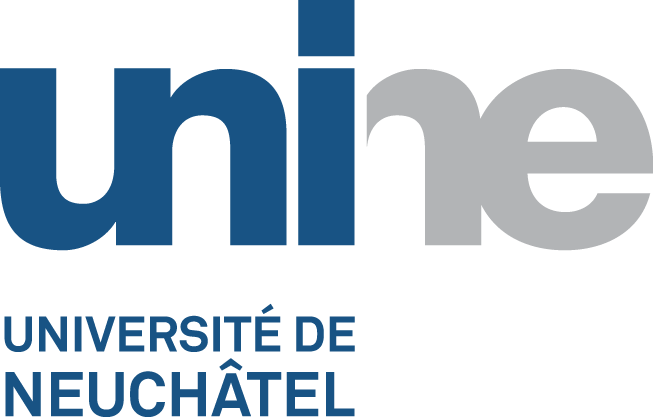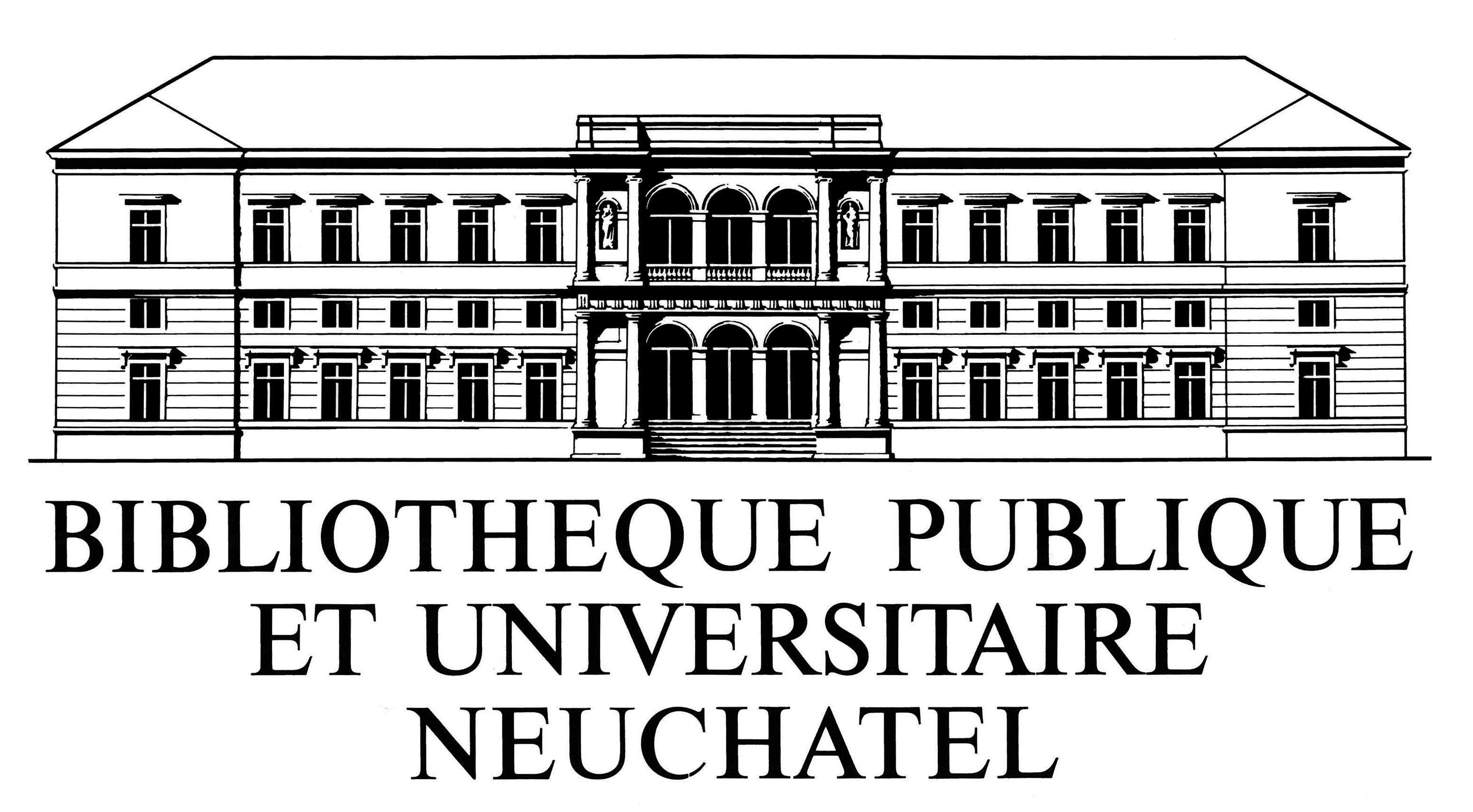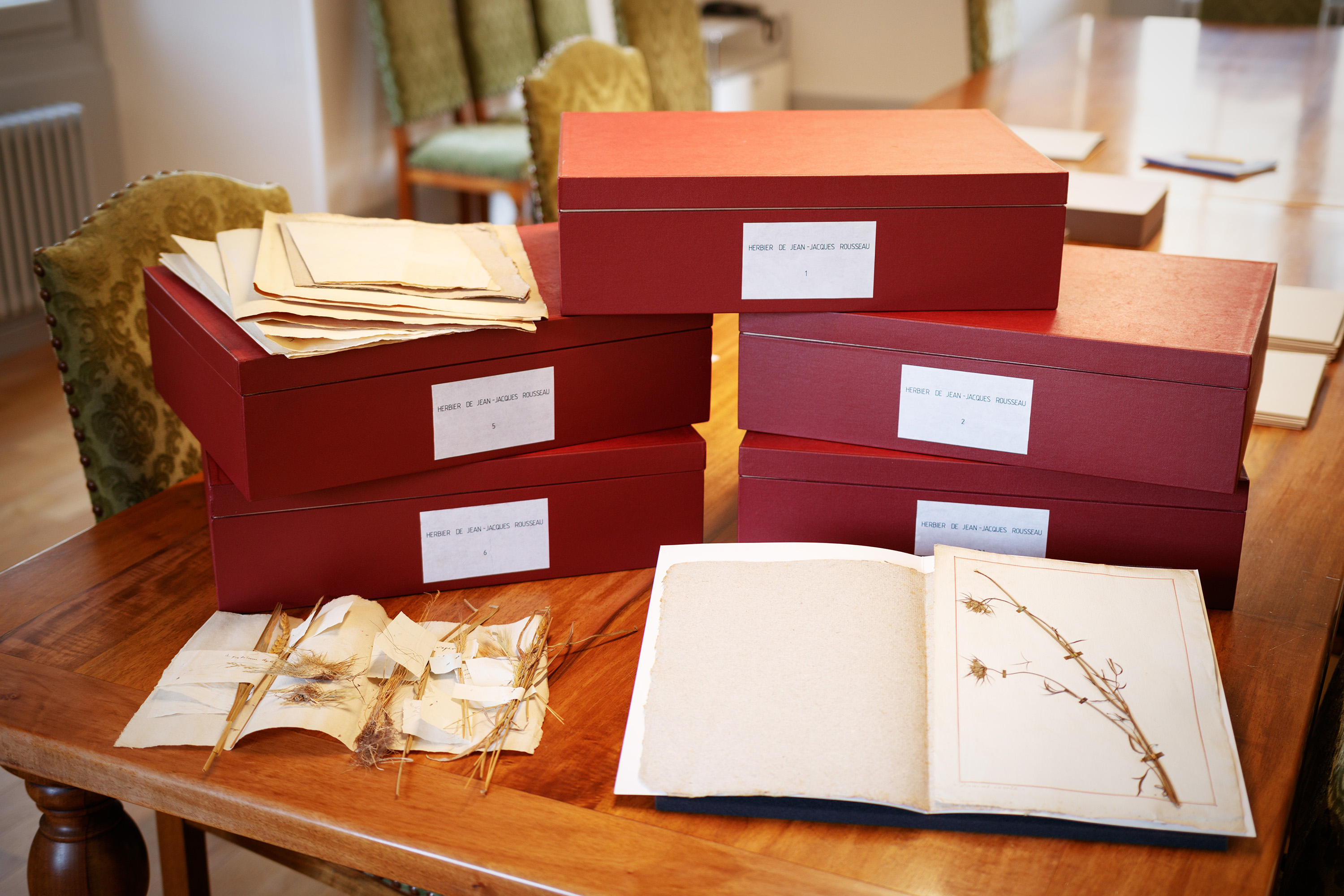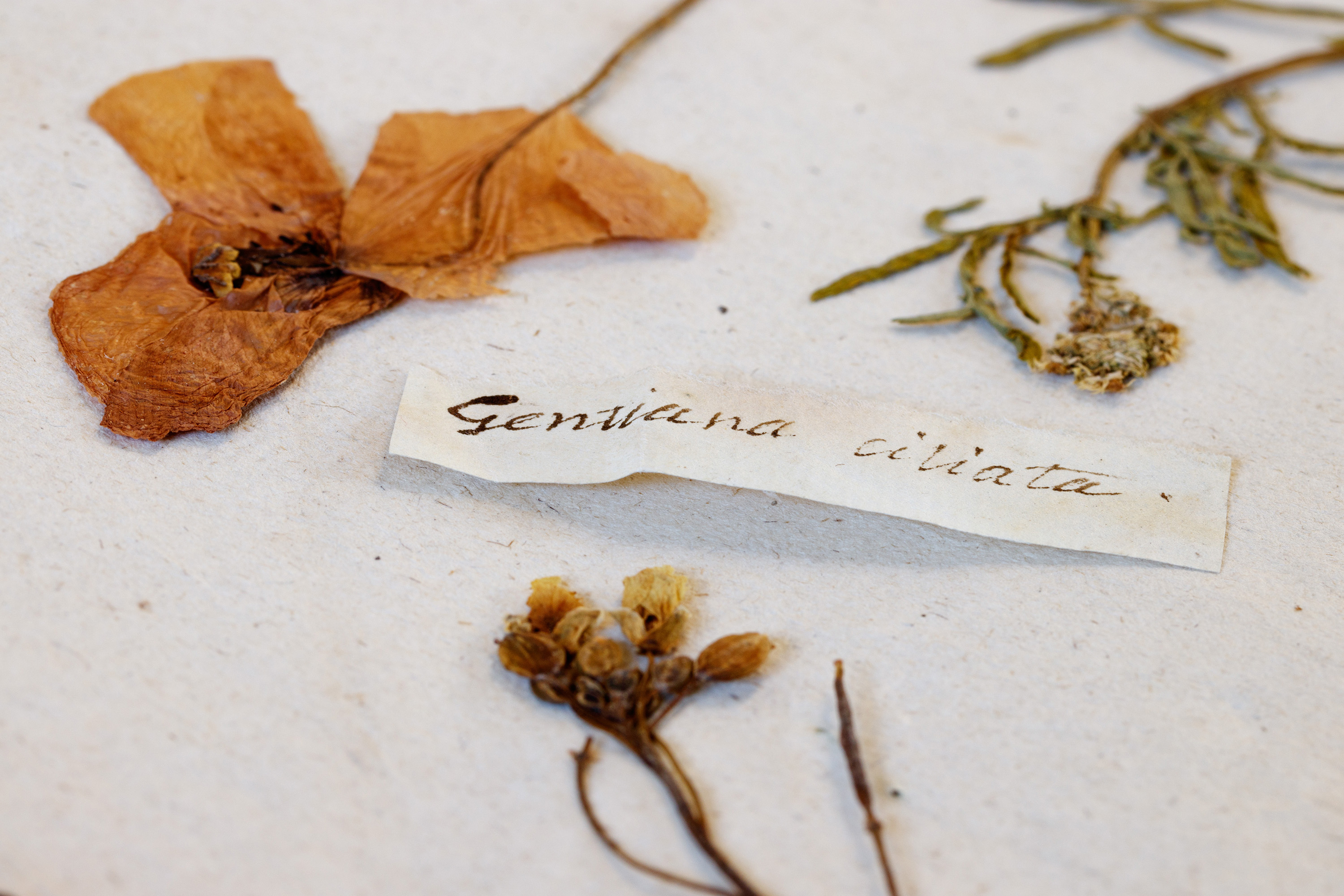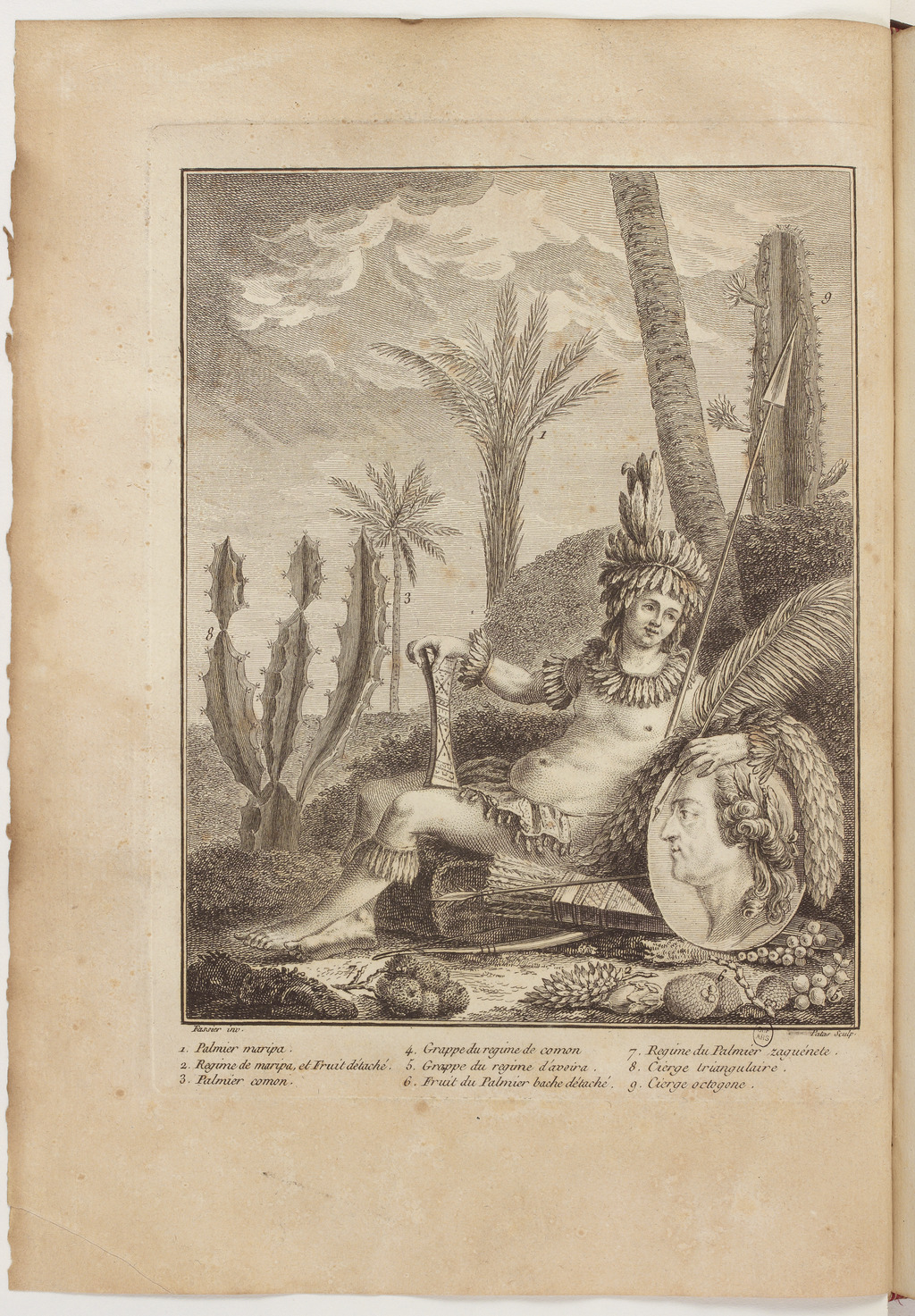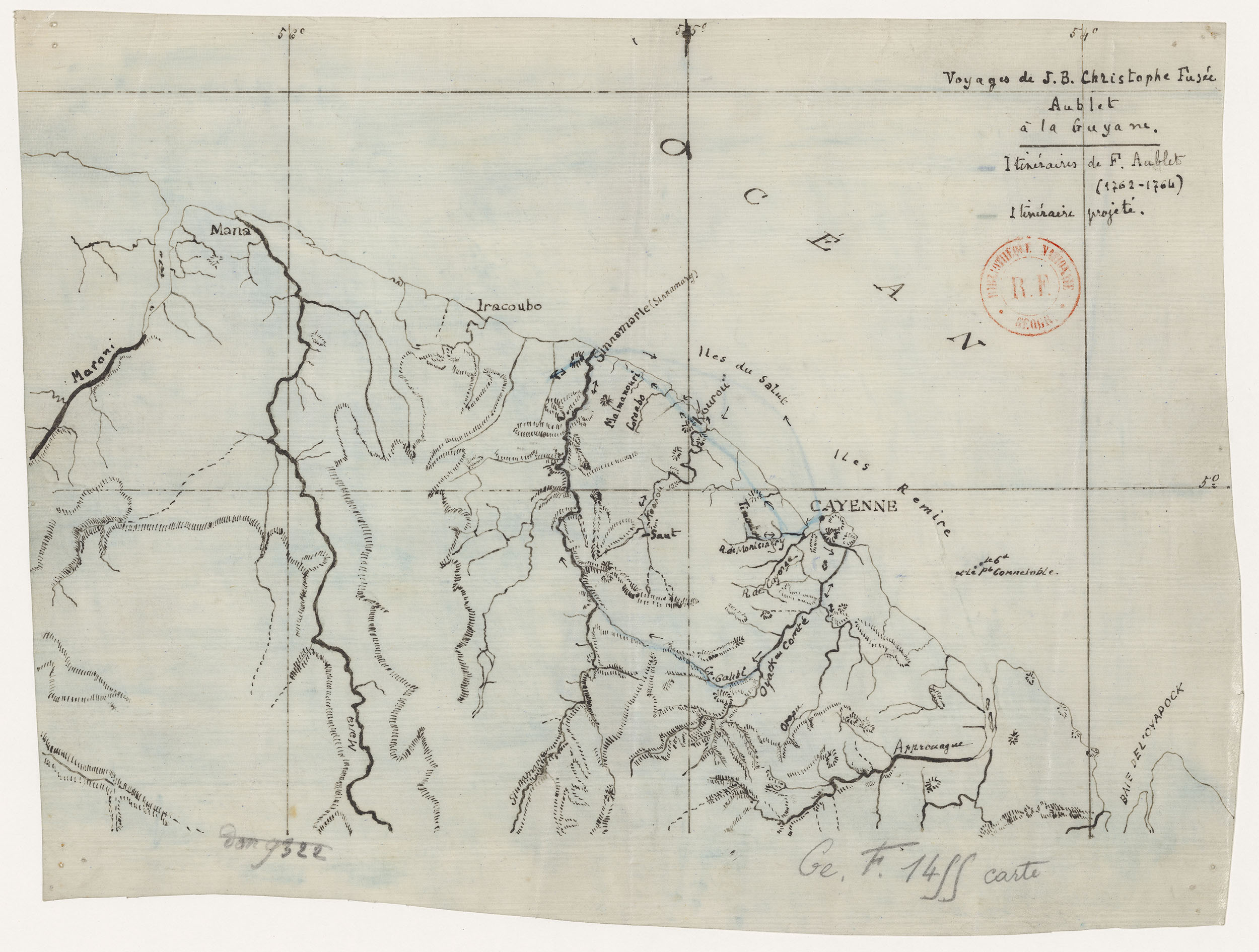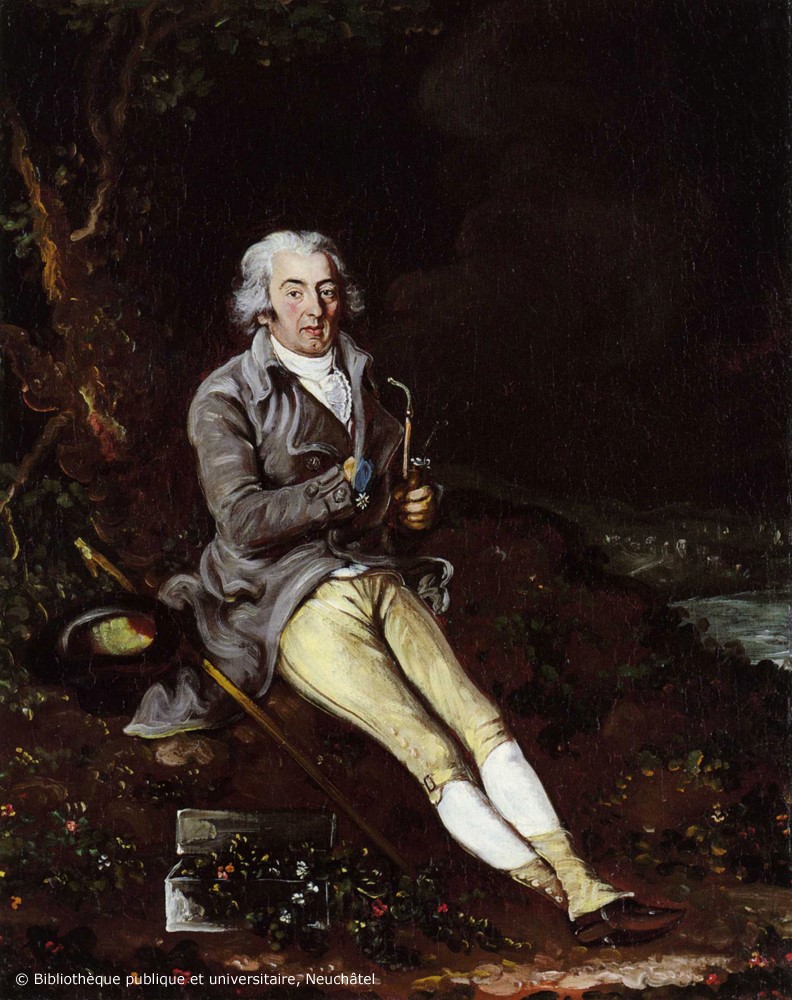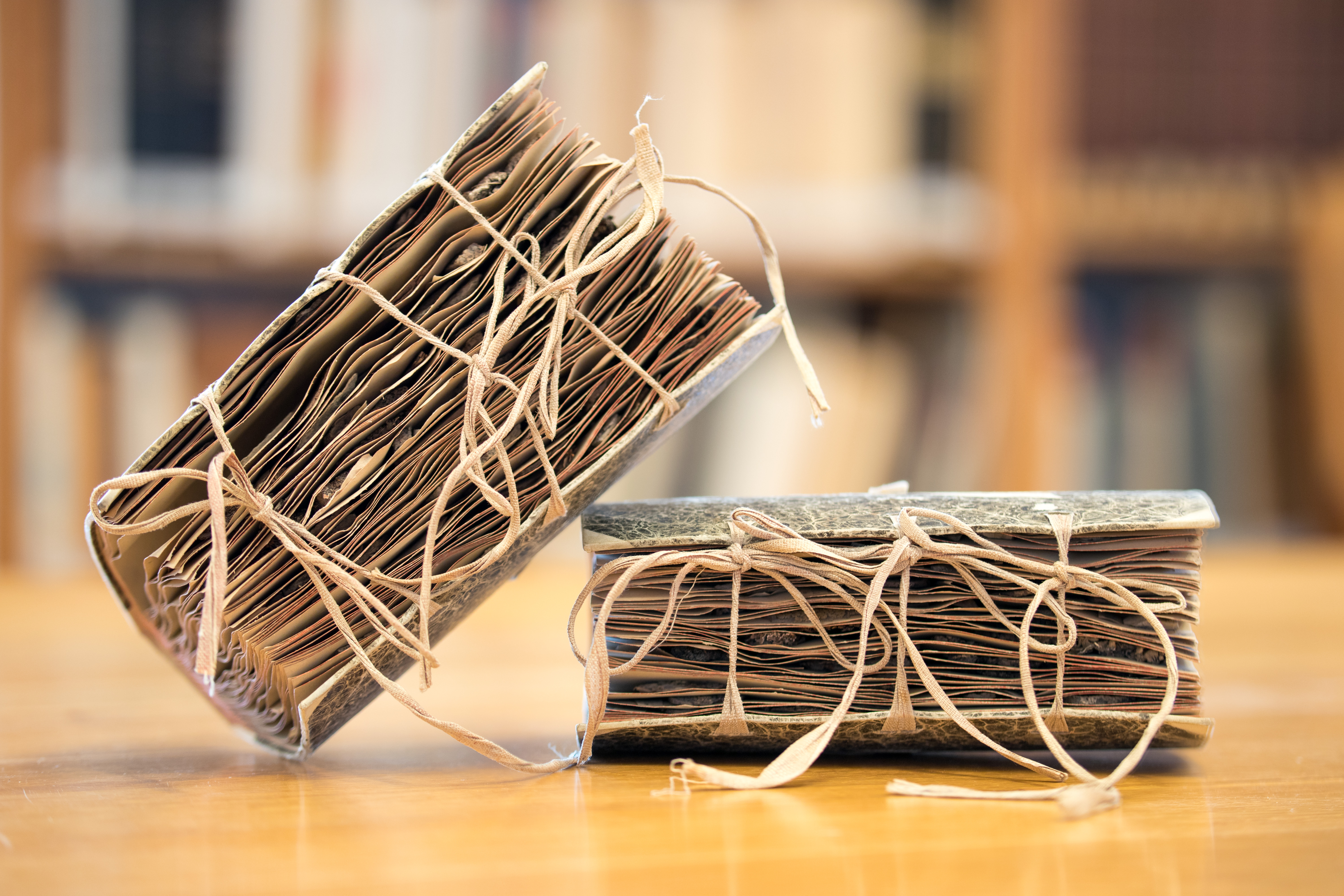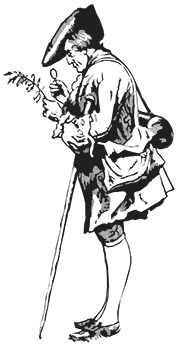Jean-Baptiste-Christian Fusée-Aublet (1723-1778) described more than 240 genera and 550 species and today he remains an authority in the field of tropical botany. He was first sent to the Ile de France (Mauritius) in order to establish a pharmacy with the title of “Botanist and first Apothecary-composer of the Compagnie des Indes” (1753-1761) (Fusée-Aublet, 1775, t. 1, p. 5). He was then appointed botanist by the King and stayed in French Guiana (1762-1764) within the framework of preparations for the Kourou expedition (1763). Unlike his predecessor Pierre Barrère, Aublet succeeded in assembling and identifying a substantial collection of plants. On his return to Paris in 1765, he published the voluminous Histoire des plantes de la Guiane françoise in four volumes (1775) with the help of Bernard de Jussieu. When he died in 1778, a large part of his herbarium collection ended up in the hands of Joseph Banks (1743-1820); another part ended up somewhat mysteriously in the collection of Jean-Jacques Rousseau (1712-1778) (Lanjouw, Uittien, 1940; Lourteig, Joyet, 1997). Its scarce remaining parts were redistributed to a few European institutions. Jean-Jacques Rousseau’s herbarium at the Bibliothèque publique et universitaire de Neuchâtel contains some of Aublet’s specimens in the form of notebooks.
In order to better understand the importance of Aublet’s collections from a quantitative and qualitative point of view, we surveyed the various digitised collections available, either on site at the institution concerned, or on general databases (e.g. JSTOR Global Plants, eReColtNat).
The Muséum national d’histoire naturelle in Paris holds numerous manuscripts by Jean-Baptiste Fusée-Aublet concerning his travel in French Guiana. The systematic study of these documents will allow us to highlight how Fusée-Aublet carried out his fieldwork: Where did he collect plants in French Guiana? Which local networks, both French and indigenous, did it mobilise? What methods did he use to identify the plants he gathered? How was the drafting of the Flore de Guiane carried out? What role did Bernard de Jussieu play in this work?
These questions are addressed by two post-doctoral researchers, Thibaud Martinetti (literature), and Guilhem Mansion (botany), and a PhD student, Perrine Besson. Interdisciplinary collaboration is crucial to this project’s goals. The reconstruction of Fusée-Aublet’s working methods within the framework of a social history of science can only be achieved by tackling the writings he left in his herbaria. Guilhem Mansion has gathered valuable data on the particularity of Fusée-Aublet’s botanical work by carrying out with great precision an inventory of his herbaria, an analysis of their contents and type specimens, and by carefully investigating the inscriptions and metadata of this material. Thibaud Martinetti examines as closely as possible the naturalist’s work in the field. In particular, he is developing a digital mapping project based on encoded travel manuscripts from Aublet’s expeditions inland in French Guiana, and on descriptions of the collecting sites reported in the Histoire des plantes de la Guyane françoise. The aim is to generate an interactive map of Aublet’s travels in chronological order, with the names of plants and localities as provided by the author. Digital cartography will allow to reconstruct the different stages of his botanical collections, to visualise the structure of his travels, and to recreate their temporality. It should thus constitute a valuable tool for representing and understanding botanical travel in the 18th century colonies.
Perrine Besson will study Fusée-Aublet as part of her PhD thesis on indigenous knowledge and its use in 18th century travel reports and geographical works. The Histoire des plantes of Fusée-Aublet contains, in fact, a vast and richly illustrated catalogue of local plants, several essays and observations, part of which describes the local therapeutic uses of the plants studied. The study of these indigenous practices by Europeans is currently attracting renewed interest from researchers. Perrine Besson will make a comparative study of texts by different naturalists, travellers, and philosophers in order to determine how the sources of knowledge are highlighted, or, on the contrary, hidden; what type of dialogue is established between European and indigenous perspectives; how a rhetoric of secrecy is set up in these texts; and finally, what image of the indigenous is produced by the knowledge conveyed. Some figures warrant our attention: from the simple guide to the village chief or the sorcerer, the traveller’s interlocutors are numerous, sometimes, becoming commonplaces expected from the story. What, then, is their precise function, both in documentary terms and in the narrative economy? The study will not be restricted to lists of “recipes” or observations on the medicinal uses of plants. Its aim is to suggest a more global approach of the exotic territory and the remnants of the indigenous knowledge it transmits.
ALLORGE Lucile, BORDENAVE Bruno, HOFF Michel, « L’exploration botanique en Guyane française », in Jean-Loup d’Hondt, Jacqueline Lorenz (dir.), L’exploration naturaliste des Antilles et de la Guyane, Paris, Éditions du CTHS, 2001, p. 159-172.
BERTHIAUME Pierre, L’aventure américaine au XVIIIe siècle : du voyage à l’écriture, Ottawa ; Paris, Presses de l’Université d’Ottawa, 1990.
BOUMEDIENE Samir, La colonisation du savoir. Une histoire des plantes médicinales du « Nouvau Monde » (1492-1750), Vaulx-en-Velin, Les Editions du monde à faire, 2016.
BROC Numa,
La géographie des philosophes. Géographes et voyageurs français au XVIIIe siècle, Paris, Editions Ophrys, 1975.
CASTAGNE Louis, « Fusée-Aublet, Né en 1723, Mort en 1778 », in Alexandre Gueidon (dir.), Le Plutarque provençal. Vies des hommes et des femmes illustres de la Provence ancienne et moderne par une société de Membres de l’Institut, d’Académiciens, de Savants, d’Artistes et de Littérateurs. Recueillies et publiées par Alexandre Gueidon, Marseille, Bureau du Plutarque, t. 1, 1855, p. 215-226.
CHAÏA Jean, « À propos de Fusée-Aublet. Apothicaire-Botaniste à Cayenne en 1762-1764 », in Comptes rendus du 90e Congrès national des Sociétés savantes, Nice, 1965, Section des Sciences, Paris, Éditions du CTHS, 1966, t. 3, p. 59-62.
CHAÏA Jean, « Le mouvement scientifique en Guyane au XVIIIe siècle d’après l’oeuvre inédite de Jacques-François Artur, premier médecin du roi à Cayenne, correspondant de l’Académie royale des sciences », École pratique des hautes études. 4e section, Sciences historiques et philologiques. Annuaire 1970-1971, 1971, pp. 827-830.
DEFILIPPS Robert A., MAINA Shirley L., CREPIN Juliette, « Medicinal Plants of the Guianas (Guyana, Surinam, French Guiana) », Department of Botany, National Museum of Natural History Smithsonian Institution, Washington, D.C. 20013-7012, 2004.
DELPRETE Piero G., « Typification and ethymology of Aublet’s Rubiaceae names », Taxon, 64, 2015, p. 595–624.
D’HONDT Jean-Loup, LORENZ Jacqueline (dir.), L’exploration naturaliste des Antilles et de la Guyane françaises, Paris, Les éditions du CTHS, 2001.
FROIDEVAUX Henri, « Étude sur les recherches scientifiques de Fusée Aublet à la Guyane Française (1762-1764) », Bulletin de géographie historique et descriptive, t. 12, 1897, p. 427-489.
FUSÉE-AUBLET Jean-Baptiste-Christophe, Histoire des plantes de la Guiane françoise, rangées suivant la méthode sexuelle, avec plusieurs mémoires sur différens objets intéressans, relatifs à la Culture & au Commerce de la Guiane Françoise, & une Notice des Plantes de l’Isle-de-France. Ouvrage orné de près de quatre cents planches en tailledouce, où sont représentées des Plantes qui n’ont point encore été décrites ni gravées, ou qui ne l’ont été qu’imparfaitement. Par M. Fusée Aublet, Londres, Paris, Pierre-François Didot jeune, 1775.
GODFROY Marion, Kourou and the Struggle for a French America, Springer, 2015.
HECKLAU Edmund F., MORI Scott A., BROWN John L., « Specific Epithets of the Flowering Plants of Central French Guiana », Brittonia, t. 57/1, janvier-mars 2005, p. 68-87.
HOFF Michel, CREMERS Georges, BRULARD Jean-François, « Les recoltes botaniques en Guyane française ; géographie historique de la découverte de la flore de Guyane française », Acta Botanica Gallica, 149/3, 2002, p. 245-274.
HOFF Michel, CREMERS Georges, FEUILLET Christian, GRANDVILLE (DE) Jean-Jacques, « La banque de données ‘Aublet’ de l’Herbier du centre ORSTOM de Cayenne (CAY) », Bulletin du Jardin Botanique National de Belgique, 59, 1989, p. 171-178.
HOFF Michel, « La connaissance d’une flore : qui a récolté quoi en Guyane française depuis Aublet ? », Acta Botanica Gallica 143, 1996, 199-218.
HOWARD Richard A., « The Plates of Aublet’s Histoire des Plantes de la Guiane Françoise », Journal of the Arnold Arboretum, t. 64/2, avril 1983, p. 255-292.
LANJOUW J., UITTIEN H., « Un nouvel herbier de Fusée Aublet découvert en France », Recueil des travaux botaniques néerlandais, 37, 1940, p. 133–170.
LEANDRI Jacques, « Un pharmacien provençal découvre une partie de la flore du Nouveau Monde : J. B. C. Fusée Aublet et l’Histoire des plantes de la Guyane française », Adansonia, 8, 1968, p. 137–146.
McCLELLAN II James E., Colonialism & Science. Saint Domingue in the Old Regime, Chicago & London, The University of Chicago Press, 1992.
McCLELLAN III James E. & REGOURD François, The Colonial Machine: French Science and Overseas Expansion in the Old Regime, Turnhout, Brepols, 2011.
MORAT Philippe, AYMONIN Gérard Guy, L’herbier du monde, Paris, Iconoclaste, 2004.
PLOTKIN Mark J., BOOM Brian M., ALLISON Malorye, The Ethnobotany of Aublet’s Histoire des Plantes de la Guiane Françoise (1775), Saint-Louis, Missouri Botanical Garden, 1991.
REGOURD François, « Maîtriser la nature : un enjeu colonial. Botanique et agronomie en Guyane et aux Antilles (XVIIe-XVIIIe siècles) », Revue française d’histoire d’outre-mer, t. 86, no 322-323 : « De l’inventaire du monde à la mise en valeur du globe. Botanique et colonisation (fin 17e siècle-début 20e siècle) », 1999, p. 39-63.
SANDWITH Noel Y., « Contributions to the flora of tropical America: LXX. Notes on some Aublet types in the Paris Herbarium », Kew Bulletin, 17, 1963, p. 257–262.
VEYRET Yvonne, « Louis Claude Marie Richard, naturaliste du roi en Guyane au XVIIIe siècle. Un des fondateurs de l’orchidologie moderne », Orchidées, 25, 1996, p. 31-38.
VUILLEMIN Nathalie, « L’impossible inscription : l’institution du manque dans le processus de validation du savoir dans Voyage à la Martinique de Thibault de Chanvalon (1763) », in Nathalie Vuillemin, Thomas Wien (éd.), Penser l’Amérique : de l’observation à l’inscription, Oxford, Voltaire Foundation, 2017, p. 195-223.
WARREN Adam, « From Natural History To Popular Remedy. Animals and their Medicinal Applications among the Kallawaya in Colonial Peru », in Martha Few, Zeb Tortorici (eds.), Centering Animals in Latin American History, Durham and London, Duke University, 2013, p. 123-148.
WEBSTER, Grady L., Synopsis of the genera and suprageneric taxa of Euphorbiaceae, Annals of the Missouri Botanical Garden, 81, 1994, p. 33–144.
ZARUCCHI James L., The treatment of Aublet’s generic names by his contemporary and by present-day taxonomists, Journal of the Arnold Arboretum, 65, 1984, p. 215–242.



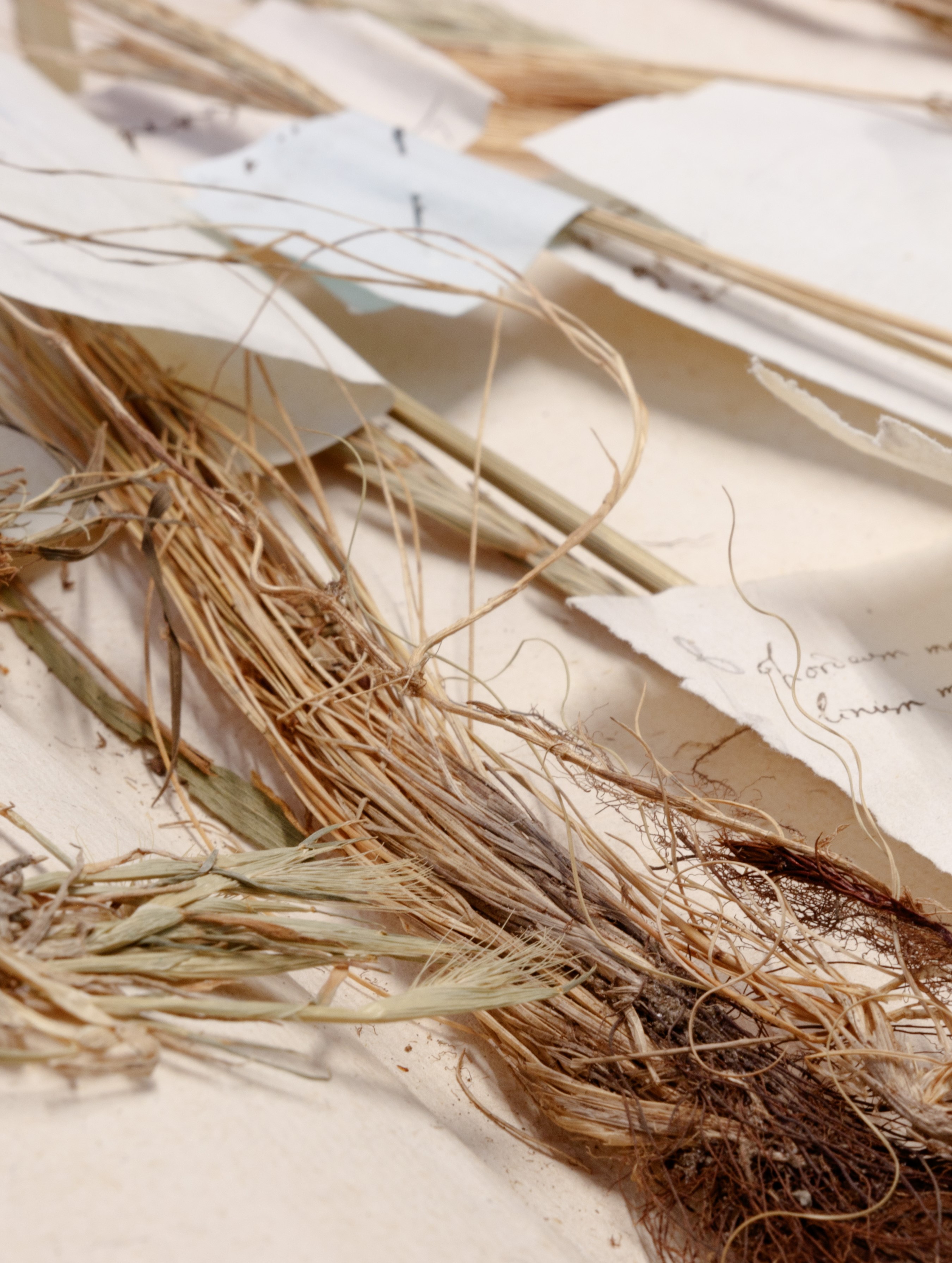
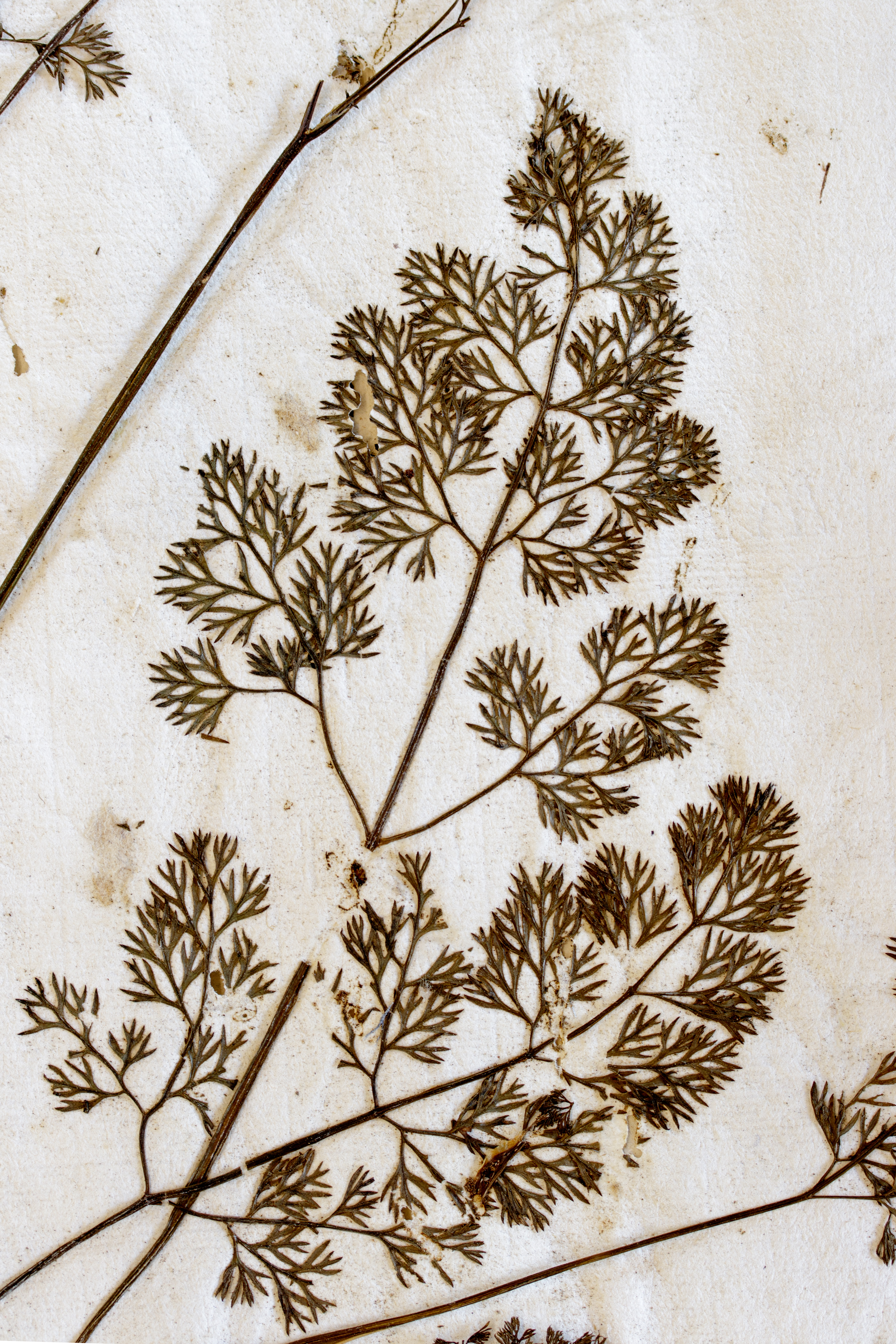
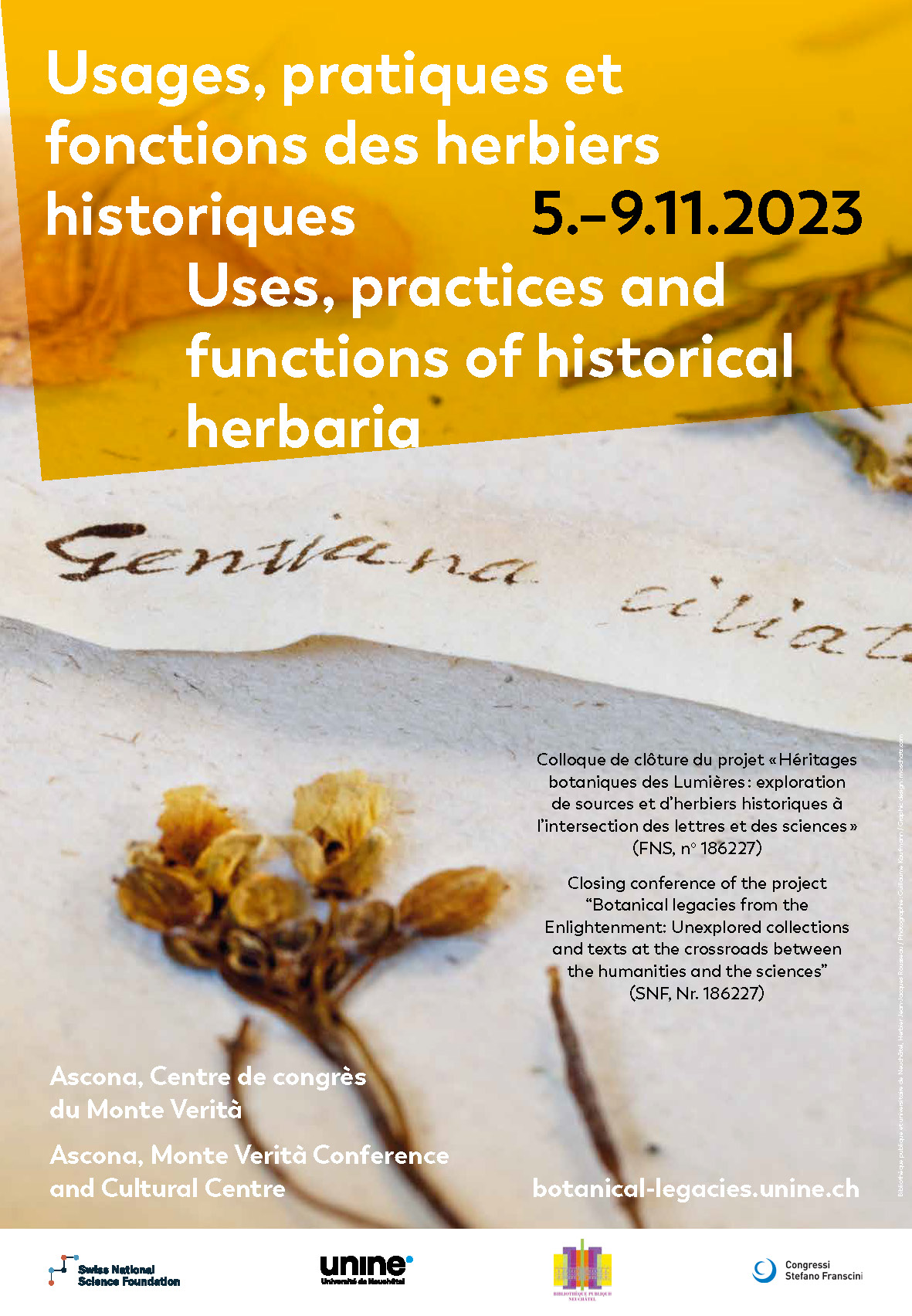 In the 18th century, as botany developed and became more institutionalised, the functions of the herbarium diversified. As an instrument for the acquisition, recording, exchange, and dissemination of knowledge about the plant kingdom, the herbarium deserves to be considered from a scientific as well as an artistic, economic, and social perspective. Indeed, the herbarium not only documents the processes of collection, description, classification, and nomenclature of specimens, but also, in relation to other types of sources, the networks of botanical exchanges, the role of some intermediaries in the construction of knowledge and the scientific ambitions of their owners. Surrounded by enigmas and often fragmentary, the historical collections that have survived benefit from being studied in an interdisciplinary and dialogical perspective.
The colloquium “Uses, practices and functions of historical herbaria” aims to stimulate this dialogue. It is part of the research project “Botanical legacies from the Enlightenment: unexplored collections and texts at the crossroads between the humanities and the sciences” that a team of botanists, historians of science, historians of literature and computer scientists is conducting at the University of Neuchâtel (Switzerland) around Jean-Jacques Rousseau (1712-1778), Jean-Baptiste-Christophe Fusée-Aublet (1723-1778) and Jean-Frédéric Chaillet (1747-1839). These three botanists were active in the field of natural history at different levels. Their botanical activities, their contrasting backgrounds, and the collections they built up provide rich material for rethinking the relationship between regional and international botanical practices, the approach of the amateur and that of the professional botanist, and the institutional and private issues involved in scientific activity.
One day will be devoted to each of the three botanists. The focus will be on the content and history of the plant collections, but also on their current conditions of conservation and study, and in particular on digital publication devices. Combining panel lectures and round tables, the colloquium will also be open to papers with a broader scientific, epistemological, or methodological scope on historical herbaria and their study. In addition, it will consider the contemporary uses of such sources in different fields, such as taxonomy, floristics and biodiversity.
Languages of the conference: French and English.
In the 18th century, as botany developed and became more institutionalised, the functions of the herbarium diversified. As an instrument for the acquisition, recording, exchange, and dissemination of knowledge about the plant kingdom, the herbarium deserves to be considered from a scientific as well as an artistic, economic, and social perspective. Indeed, the herbarium not only documents the processes of collection, description, classification, and nomenclature of specimens, but also, in relation to other types of sources, the networks of botanical exchanges, the role of some intermediaries in the construction of knowledge and the scientific ambitions of their owners. Surrounded by enigmas and often fragmentary, the historical collections that have survived benefit from being studied in an interdisciplinary and dialogical perspective.
The colloquium “Uses, practices and functions of historical herbaria” aims to stimulate this dialogue. It is part of the research project “Botanical legacies from the Enlightenment: unexplored collections and texts at the crossroads between the humanities and the sciences” that a team of botanists, historians of science, historians of literature and computer scientists is conducting at the University of Neuchâtel (Switzerland) around Jean-Jacques Rousseau (1712-1778), Jean-Baptiste-Christophe Fusée-Aublet (1723-1778) and Jean-Frédéric Chaillet (1747-1839). These three botanists were active in the field of natural history at different levels. Their botanical activities, their contrasting backgrounds, and the collections they built up provide rich material for rethinking the relationship between regional and international botanical practices, the approach of the amateur and that of the professional botanist, and the institutional and private issues involved in scientific activity.
One day will be devoted to each of the three botanists. The focus will be on the content and history of the plant collections, but also on their current conditions of conservation and study, and in particular on digital publication devices. Combining panel lectures and round tables, the colloquium will also be open to papers with a broader scientific, epistemological, or methodological scope on historical herbaria and their study. In addition, it will consider the contemporary uses of such sources in different fields, such as taxonomy, floristics and biodiversity.
Languages of the conference: French and English.

